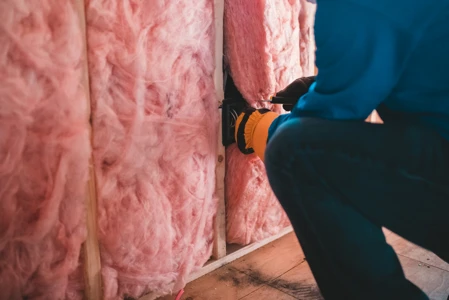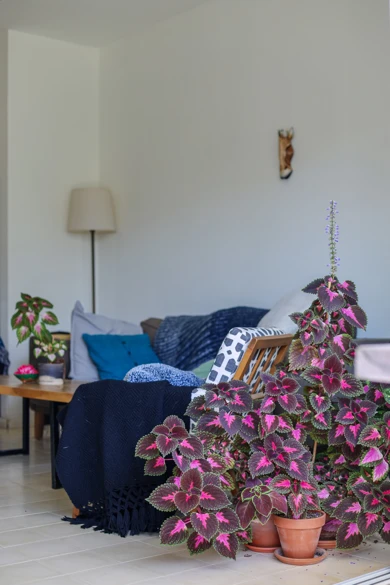 Written by: Ben Thompson - Deputy CEO
Written by: Ben Thompson - Deputy CEO
Living sustainably is becoming more of a priority for many homeowners across the country. A term closely tied to sustainable living is ‘retrofitting.’ At its core, retrofitting is the process of making substantial changes to an existing building, usually to improve its eco-friendliness. Here's how you could use your mortgage to pay for energy-efficient upgrades, including solar panels.
This guide will break down everything you need to know about retrofitting your home. We’ll discuss what it means, why it’s important for a sustainable future, the benefits it can offer beyond saving energy, and explore the different financing options available.
For example, you could look at remortgaging to release some funds for buying and installing solar panels, which can cost anywhere from £5,000 to £15,000.1
Whether you’re a seasoned pro, or just starting out on the green train, we’re here to help equip you with the knowledge you need to transform your home into a comfortable, energy-efficient haven, built for the future.
If you're looking to remortgage to finance a retrofit, get in touch with us and let's discuss your options.
What is retrofitting?
Think of retrofitting as taking your home and optimising it for energy efficiency and reduced environmental impact. This can involve a range of improvements, but the foundational elements usually include boosting insulation and addressing drafts.
Both improvements help trap heat in the winter and keep your home cooler in the summer, potentially contributing to less overall energy loss.
Here are some other areas you might consider if you’re doing an extensive retrofit:
Upgrading heating and cooling systems
Swap out old, inefficient heating and cooling systems for newer, more energy-efficient models. Think about heat pumps, solar water heating, or even smart thermostats for optimal energy usage.
Investing in renewable energy
Solar panels are a popular choice, but depending on your area, may not be a viable year-round solution. One of the easiest ways to ensure you’re using renewable energy is to work with providers who exclusively use and sell renewable energy. That being said, there are a host of interesting products to explore, from small wind turbines to biomass systems.
Choosing smart lighting and appliances
A cheaper alternative to big installation projects is opting for smart lighting and appliances during your home retrofit. Replace traditional incandescent bulbs with LED lighting and experiment with smart devices to control your electronics. For example, you can set up routines to turn lights and appliances off when you know you’ll be away from home.
Remember, retrofitting doesn't have to be an all-or-nothing proposition. You can start small and prioritise the areas that will have the biggest impact on your energy use and budget.
Making your home more sustainable on a budget
Here's our top tips on improving the energy efficiency of your home (without spending too much money).
How to reduce your home energy cost
Reducing home energy costs has become a top priority for many households, and retrofitting is only one solution.
Top tips to cut energy waste
Looking to save some energy and improve your home's value? Here are some practical steps you can take!
Why retrofitting your home is important
We all play a part in contributing to climate change, and as it stands, homes and workplaces make up more than a third of all carbon emissions1 in the UK.
Under the current climate agreement, which is bound in law, the UK needs to reach a goal of 80% in greenhouse gas emissions by 20502. While this may seem like a lofty goal, it’s not unachievable. That being said, there is a lot of work to be done.
The Climate Change Committee has been proposing for some time that the UK government set into law that owner-occupied homes reach a minimum EPC rating of C by 20352, but as it stands no progress has been made.
While in this case, it means that the onus is on the homeowner, the government could help accelerate the transition through a number of programmes and incentive schemes, which many would eagerly embrace.
Total home retrofits can be expensive, and we’ll touch on what costs you can expect when you aim to retrofit your home, but for now, let’s look at some of the benefits. While we’re working towards a larger goal as a country, there are plenty of personal advantages to enjoy.
What are the benefits of retrofitting your home?
Retrofitting can not only help you improve the energy efficiency of your home, potentially saving you money, but it can also help create a more comfortable, even temperature year-round and help eliminate draughts.
For an in-depth look at how much it could cost as well as how much you could potentially save, check out our article on the costs of retrofitting your home.
Retrofitting your home isn't just about saving money on your energy bills, although that's certainly a perk. It can also help improve the value of your property, your overall health and comfort, and help reduce your carbon footprint.
Let's explore the advantages of making your home more sustainable:
Enhanced comfort
A well-insulated home means a comfortable haven and consistent, year-round temperatures3. Draughty windows and doors could become a thing of the past, creating a more pleasant living environment.
Healthier living
Retrofitting your home often means you can address issues like dampness and mould growth, which can exacerbate allergies and respiratory problems4. Better ventilation in a sealed home can also improve indoor air quality.
Improved property value
Evidence suggests that buyers are increasingly looking for eco-friendly features - or, at the very least, a home that has a good EPC rating. In fact, nearly two-thirds of homebuyers surveyed5 indicated a desire to buy a sustainable home. 38% noted that they intended to buy a property with modern insulation, efficient boilers, and renewable energy supplies. This could potentially fetch a higher price tag when it comes time to sell.
Reduced environmental impact
This is the heart of sustainability. By using less energy, you’re lowering your home’s carbon footprint6. This not only benefits the environment, but also contributes to a reduction in greenhouse gas emissions, helping the world combat climate change.
Government and lender incentives
There are a wide variety of financial incentives available to help with eco-friendly living, whether it’s a green mortgage or specific grants. Some schemes include:
- The boiler upgrade scheme
- Heat pump financial incentives (currently available through UK Energy Support, British Gas, and Octopus Energy)
- Double and triple glazing grants available for household incomes below £31K
- Green deals with participating providers
Financing a retrofit
At the moment, the cost of a retrofit, full house or not, can look overwhelming. While there aren’t currently any nationwide schemes to make financing a retrofit easier, there are some roads you could investigate.
Green loans
Some banks, like Natwest and Barclays, offer green loans for businesses, which aims to support their sustainable upgrades, from solar panels to heat pumps. These are loans that are specifically geared to fund projects that will have a positive impact on the environment.
Remortgaging
It is possible to remortgage your home in order to fund a retrofit and this is often referred to as a green mortgage. A green mortgage is a type of loan that provides funds specifically for energy-efficient upgrades and can include anything from insulation to new heating or cooling systems.
It is important to note that not all lenders offer green mortgages, so you need to consider this when you’re considering a remortgage. You should also consider the costs and benefits of remortgaging, as well as the potential impact on your monthly mortgage payments.
Find your mortgage
Our mortgage finder searches thousands of deals, so you can rest assured we'll always find the right one for you.
How to retrofit your home
You can either tackle your home retrofit in one go, or in a few stages. While it’s most beneficial to retrofit your home in one fell swoop, this obviously has cost implications.
If you can’t manage a full home retrofit in one go, make sure you plan each stage with the whole house in mind. Taking the steps to retrofit one part of your home may lead to issues in another. For example, improving the glazing and draught proofing in one room could lead to damp problems in another if you don’t have suitable ventilation.
As a start, consider your insulation, which many refer to as the ‘building fabric.’ This will mean insulating your cavity walls and loft, or improving the insulation already there. From there you can look at airtightness and ventilation. After this stage you should look into improving the following areas for a true, full-scale retrofit:
- Heating and cooling systems
- Water heating systems
- Efficient lighting options
- Energy monitoring systems
Talk to a professional
Retrofitting your home is an important step towards a sustainable future, as it not only reduces your carbon footprint, but also offers several health and financial benefits. While the costs may seem initially daunting, there are financing options available that you could take advantage of.
If you’re considering a retrofit and are aiming to remortgage to do so, get in touch with us today to arrange a no obligation call and discuss how we can help you find a deal that works for your circumstances.
Frequently asked questions
Retrofitting a building means installing new features to improve energy efficiency and increase the building’s EPC ratings.
Retrofitting might include adding insulation into walls, improving the glazing on windows, eliminating draughts, and installing energy-efficient appliances and lighting.
All retrofits fall into the renovation category, but not all renovations are retrofits. A renovation may just improve the aesthetics of a house, whereas a retrofit specifically improves a home’s energy-efficiency. Check out our home renovation checklist here.
A retrofit could take anywhere from a few weeks to a few months, depending on how complicated or intensive your project is.
Retrofitting can potentially future-proof your home, boost its value, and save you money on monthly energy bills. However, make sure you do your research to find out if retrofitting is a good fit for you. Learn more about the benefits of retrofitting.
You absolutely can, though listed buildings may need special permission to undergo any physical changes.
Important information
Your home may be repossessed if you do not keep up repayments on your mortgage.
There may be a fee for mortgage advice. The actual amount you pay will depend on your circumstances. The fee is up to 1% but a typical fee is 0.3% of the amount borrowed.




